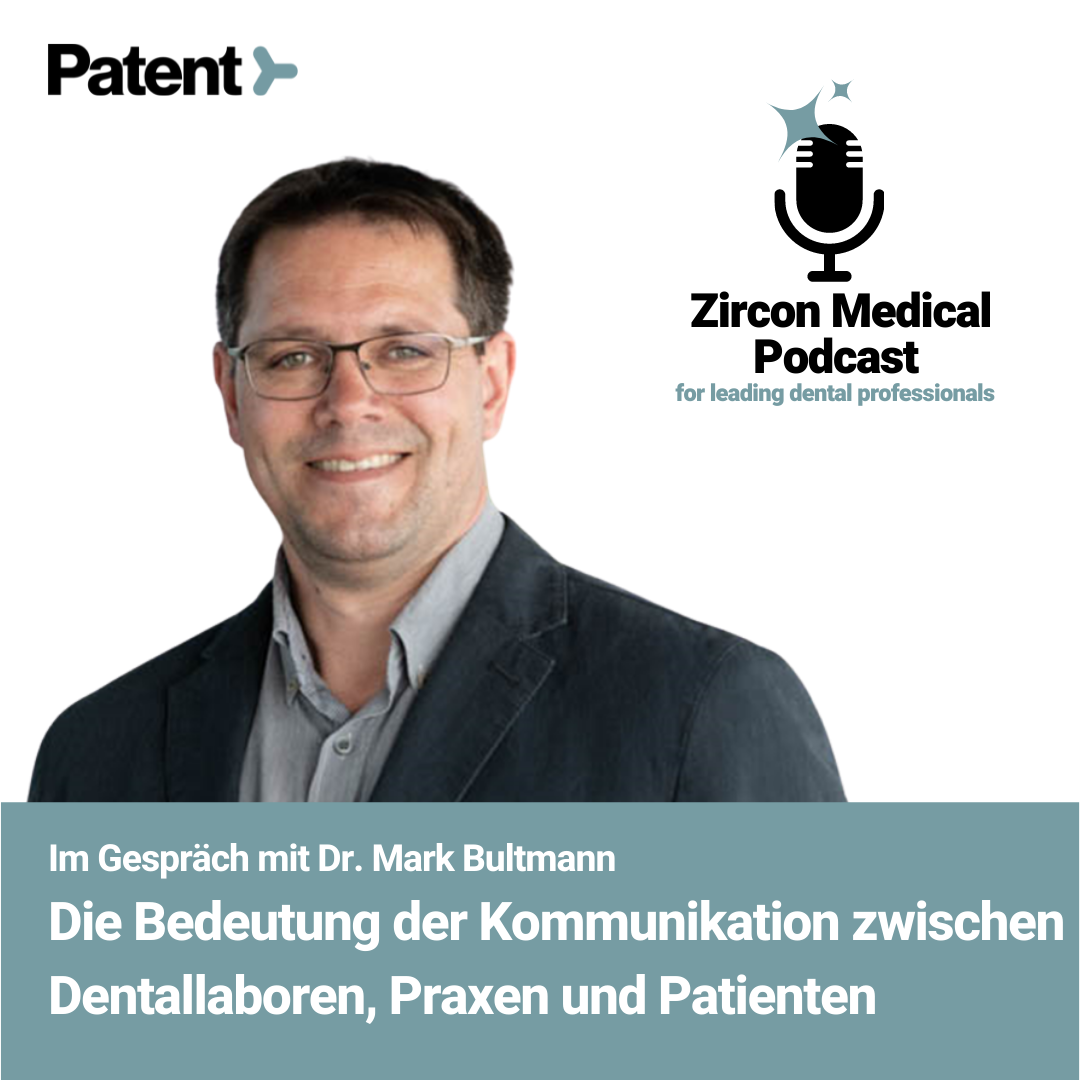
Breaking the myth that dental laboratories and practices don’t have much contact
The importance of proactive communication while making prosthetics
Collaborating with the dentist for implant planning
Software and digital technologies improve communication between technicians and dentists
The importance of communication between dental technicians and patients
Tips for dental technicians who want to communicate between with dental practices and patients
Dr. Mark Bultmann
Master Dental Technician & Owner of Via Denta GmbH
Owner of Via Denta GmbH for 18 years
Master dental technician
Believes in a holistic approach with patients
Website: https://www.via-denta.com
Email: info@via-denta.de
LinkedIn: https://www.linkedin.com/in/mark-bultmann-6a9483204
Moorweg 34, 26789 Leer (Ostfriesland), Deutschland
In Conversation with Dr. Mark Bultmann
Dentists and patients often assume that there’s no need for in-person communication with dental technicians and laboratories. Dental laboratories are assumed to be siloed organizations disconnected from the day-to-day running of dental practices. However, Mark Bultmann, the master dental technician and owner of Via Denta GmbH believes there’s immense value in active communication and cooperation between practices, laboratories, and patients.
Our team at Zircon Medical recently hosted Mark Bultmann on our podcast series to discuss the importance of communication between dental practices and laboratories.
Introducing Mark Bultmann, the master dental technician and owner of Via Denta GmbH
Mark Bultmann is a master dental technician and owner of Via Denta GmbH, a dental laboratory founded in March 2006. He believes in taking a holistic approach to patient care and designing restorations based on comprehensive scientific backing and research. When asked when he knew he wanted to become a dental technician, he says the desire gradually grew on him as he continued his education.
Beaking the myth that dental laboratories and practices don’t have much contact
Mark says he has spent quite a lot of time at the dentist's chair to observe the dentist ply his trade. He always finds it exciting to observe dentists and perhaps offer some support. After designing the product, he says he often needs to assist dentists with insertion. He also develops insertion keys that help the dentist find the correct tooth position.
Mark also invites dentists and assistants to his laboratory to show the work that goes into designing the prosthetics. He shows dentists how to layer a tooth and the problems that may arise during the process. Mark says there’s “pure craftsmanship” in designing prosthetics — they don’t just come out of a drawer. Showing all the behind-the-scenes work allows dentists to communicate better with the patients as well.
The importance of proactive communication while making prosthetics
Mark says he always favors communicating in advance. For example, he likes to design models and communicate with dentists during the planning stage of the treatment, so they can collectively curate the treatment plan and the patient’s journey. If he doesn’t receive adequate information about the patient, he’s always interested in finding out more about why a specific prosthetic or design has been requested.
Mark would ideally like to shape the planning in advance. For example, if he believes a gap is too narrow to place an implant, he may interject and ask for the gap to be opened up to accommodate a suitable prosthetic. As it now stands, Mark says he often receives requests for impressions with instructions that might work but wouldn’t be optimal.
Collaborating with the dentist for implant planning
Mark works with several practices that place a strong emphasis on planning, especially while placing implants. Before the implant is placed, the tooth is placed in the row where the prosthetic would be placed, allowing the dentist to plan the treatment accordingly. He generally favors screw connections because it allows them to curate another solution if something goes wrong.
Mark sets up the tooth, which goes into the practice. In the meantime, the dentist makes the implant templates, scans them with a scanner, and prints the implant template via the digital workflow. During the implantation, the dentist takes a digital impression so that when the patient returns, they receive the finished crown.
This approach shortens the sessions, minimizes the need for multiple sessions, and the digital workflow allows them to design natural-looking teeth.
Software and digital technologies improve communication between technicians and dentists
“For me, it has always been important to have good communication and good exchange with the practice,” Mark says. “That means I like to work with photographs. If I can't see the patient myself, then I can get an impression of the patient. And then I also know roughly where the journey should go.”
Mark says communicating the need for photographs is difficult because he doesn’t always receive the correct images, so there’s a lot of sending photos back-and-forth before receiving the right ones. Furthermore, classifying the pictures is another problem because they eventually have a jumble of picture collections without a clear understanding of what belongs where. Because of that, they’ve developed custom software that addresses their needs for pictures and classifications.
They now use their custom-made software to improve the workflow. Mark says he identifies the photos he needs in an A5 sheet so his dentists know exactly what to send. Once he receives the correct images, he enters them into his software, classifying them in the correct areas. Furthermore, he can also send the original pictures back to the dentist with notes on what they can or can’t achieve. This streamlines the entire process.
Mark says the software also allows them to print out the planning with the original patient pictures. This allows the patient to see why they’re getting certain prosthetics and what their teeth will look like after the treatment. As such, instead of examining a set of numbers that don’t mean much to them, patients can examine pictures of their original teeth with an overview of the final results, thus truly appreciating the treatment’s necessity and results.
The importance of communication between dental technicians and patients
According to Mark, producing images in advance also helps them meet the patient’s specific goals and expectations. Everyone has their own tastes, and a patient won’t necessarily like the tooth shape designed by the ceramist. That’s why he likes consulting his books for different teeth shapes and giving the patient enough options to select the one they like the most.
“I would say that every technician has 2 or 3 favorite shapes,” Mark says. “You can see who made which crown, for example.” He says most technicians stick to shapes they’re comfortable with, and they have to condition themselves, again and again, to step outside their comfort zone. “I can make something that I think is beautiful, but that doesn't mean the patient will like it.”
According to Mark, that’s why all dental technicians should actively communicate with the patient — it allows them to design prosthetics according to the patient’s wishes.
Mark emphasizes that technicians should meet with the patients in person instead of communicating solely via the dentist. The patient should be invited to the dental laboratory to see where and how their prosthetics are made. This also gives the patient a higher appreciation for their restoration. When they see the time and technology behind the prosthetics, they’re a lot more willing to pay
Tips for dental technicians who want to communicate between with dental practices and patients
Sit down with the dentists to discuss individual cases more often. Although it takes a lot of time, it adds significant value in the end — curating a plan in advance is always preferable to adjusting the plan later when it fails.
Go for advanced dental training to gauge the dentists’ needs and understand how you can support them. Always put yourself in the dentist’s shoes and figure out how you can help more.
Invite dentists and the entire dental staff to tour your laboratory and understand the processes involved. This also gives the dentists a better understanding of your problems.
Mark says all dental technicians should work harmoniously with other fields of medicine. For example, they can encourage dentists to refer patients with temporomandibular joint disorders to physiotherapists since jaw misalignment often affects the cervical spine and vice versa.
Explore the digital field and find your way around the digital work, so you understand what’s feasible in the current landscape.
While Mark believes everyone should stay up-to-date with digital technologies, he believes an over-emphasis on it can make you lose sight of something more important — craftsmanship. “The person sitting in front of the computer has to know how the whole system works. It’s easy to say press this button and the chewing surface is ready, but I also have to understand what the chewing surface looks like or what it does.”
You can find Mark Bultmann on LinkedIn or the Via Denta GmbH Website. You can also listen to him in our Zircon Medical podcast or continue reading for a detailed article on why dentists should collaborate with physical therapists for the treatment of temporomandibular disorders.
Register for our free newsletter.
Never miss one of our weekly episodes with leading dental professionals.
Why Dentists Should Collaborate with Physical Therapists for the Treatment of Temporomandibular Disorders
An independent article by the Zircon Medical Team
Temporomandibular joint disorders (TMD), i.e., musculoskeletal disorders affecting the TMJ, masticatory muscles, dental occlusion, and cervical spine, are the most common orofacial pain conditions. Studies have shown that physical therapy is one of the most effective conservative treatments for TMD pain, but not all dentists are aware of the importance of physical therapy in TMJ treatments..
According to a 2018 peer-reviewed study, “41% of the dentists reported not being aware that PTs can treat TMD patients.” However, the study also pointed out that "oral surgeons and orthodontists were more aware about PT compared to other specialties.” As Mark Bultmann pointed out during his podcast, there’s real value in dentists collaborating with physical therapists for temporomandibular joint treatments.
Physical therapy is one of the most effective conservative treatments for TMD pain, alongside behavioral therapy and occlusal appliances. That’s because physical therapy is responsible for the identification of the musculoskeletal factors contributing to the patient’s symptoms, especially since they’re often triggered by cervical spine problems. Disc compression in the cervical spine, for example, is one of the root causes of TMJ headaches and referred neck pains.
Physical therapy can treat TMJ-associated pains using similar modalities and techniques as the rest of the musculoskeletal system. A 2006 study called “A Systematic Review of the Effectiveness of Physical Therapy Interventions for Temporomandibular Disorders” found that manual therapy, jaw exercises, and postural reeducation were effective in improving mobility and reducing the symptoms of TMD pain.
According to a 2016 perspective, “the proper orientation of four planes: the vertical plane, the bipupilar line, the plane of the otic system, and the occlusal plane are necessary for case success.” Optimal treatment should involve the restoration of spine mobility, overcoming parafunctional oral habits, and proper body mechanics. As such, this area is ripe for collaboration between dental professionals and physical therapists.
Despite physical therapy’s value as a treatment for TMD pains, there’s limited interaction and cross-reference between dentists and physical therapists. Bridging this gap is necessary to promote more holistic patient care where TMJ is concerned.











